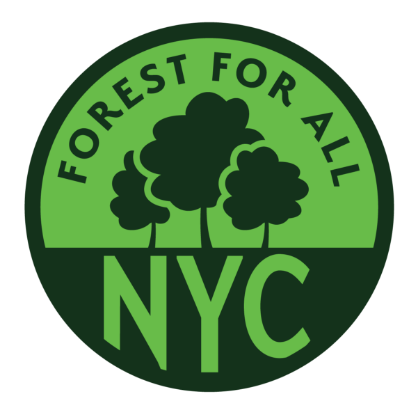By Emily Davenport | amNY
Forest for All NYC released a report that gives a clear roadmap for New York City’s urban forest.
The coalition aims to create a healthy, accessible, and lasting urban forest in New York City that equitably delivers benefits to all. The group is made up of those committed to environmental justice and conservation, as well as non-profits, businesses, and government leaders and organizations, who spent two years developing the report.
The report, entitled the NYC Urban Forest Agenda, outlines a strategic plan to not only protect, maintain and expand the urban forest, but also build a more resilient and equitable New York City.
“Every person who lives and works in New York City deserves to be in a neighborhood with healthy trees and all the benefits they provide. This report is a cross-sector, collaborative effort in service towards making that a reality,” said Emily Maxwell, New York Cities Program Director, The Nature Conservancy. “As the city enters hurricane season in our new normal, where it is projected to be increasingly more destructive with each passing year, the NYC Urban Forest Agenda provides a clear roadmap for investing in the future of New York so it can endure increasing heat waves and extreme weather, as well as combat environmental injustice and health and educational disparities.”
The city’s urban forest is made up of all of the trees found on public and private property throughout the five boroughs as well as the physical and social infrastructure that support them. According to the report, more than 7 million trees make up the city’s urban forest, which are cared for by tens of thousands of paid and volunteer tree stewards, researchers, advocates, and other practitioners.
The coalition’s agenda states that though the urban forest delivers an estimated $260 million in environmental, public health, infrastructure, and energy benefits to New Yorkers annually, there is no dedicated, long-term funding to care for this essential asset, nor a coordinated vision or plan for its management. The report also states that the city does not have a master plan to ensure that the urban forest is equitably distributed and accessible, particularly to low-income communities and communities of color.
Through the NYC Urban Forest Agenda, Forest for All NYC is looking to present a clear vision and plan to restore, protect, and grow the urban forest, which includes a comprehensive call to action with a dozen recommendations to strengthen New York City’s Urban Forest. The calls to action include:
- Achieving a 30% Canopy Cover by 2035
- Supporting the development of community-scale urban forest plans and goals
- Establishing a master plan for the urban forest
- Grow and sustain the Forest for All NYC Coalition and cultivating urban forest careers
- Increasing and equitably distributing funding for urban forestry projects
- Strengthening tree regulations and establishing incentive programs while setting tree planting and management standards
- Developing conditions to transform wood waste into a sustainable local resource
- Create an Urban Forestry Research and Monitoring Agenda
- Establishing citywide educational and tree stewardship events and monitoring urban forest environment and health
“To build a more resilient city, New York City must prioritize nature-based solutions that address disproportionate heat vulnerability and air quality issues, while providing greater access to green spaces,” said Annel Hernandez, Associate Director, New York City Environmental Justice Alliance. “Growing and maintaining our urban forest is an integral piece of environmental justice, and the NYC Urban Forest Agenda provides a pathway forward.”
To read the full NYC Urban Forest Agenda, visit ForestforAll.nyc.
Original story here.
